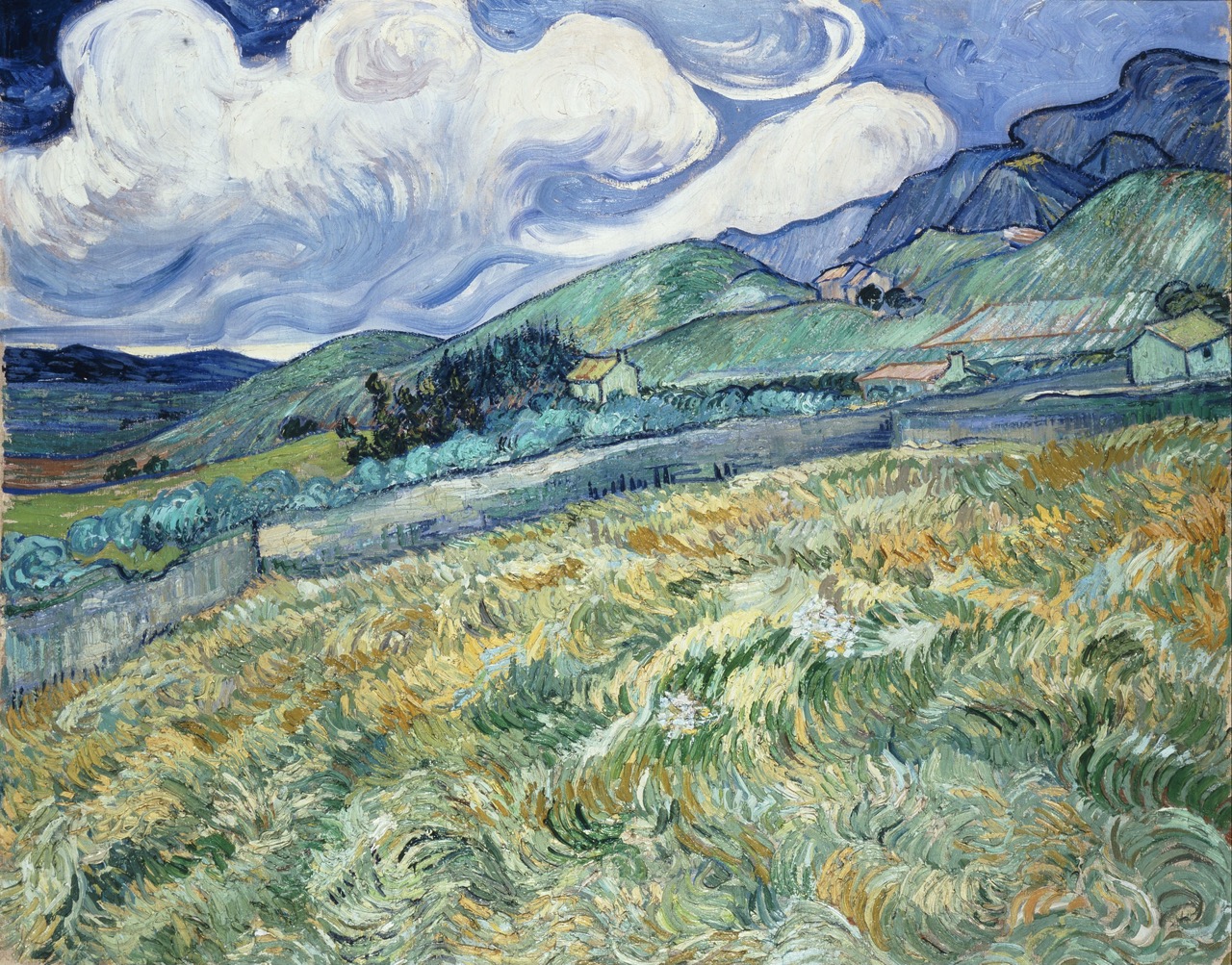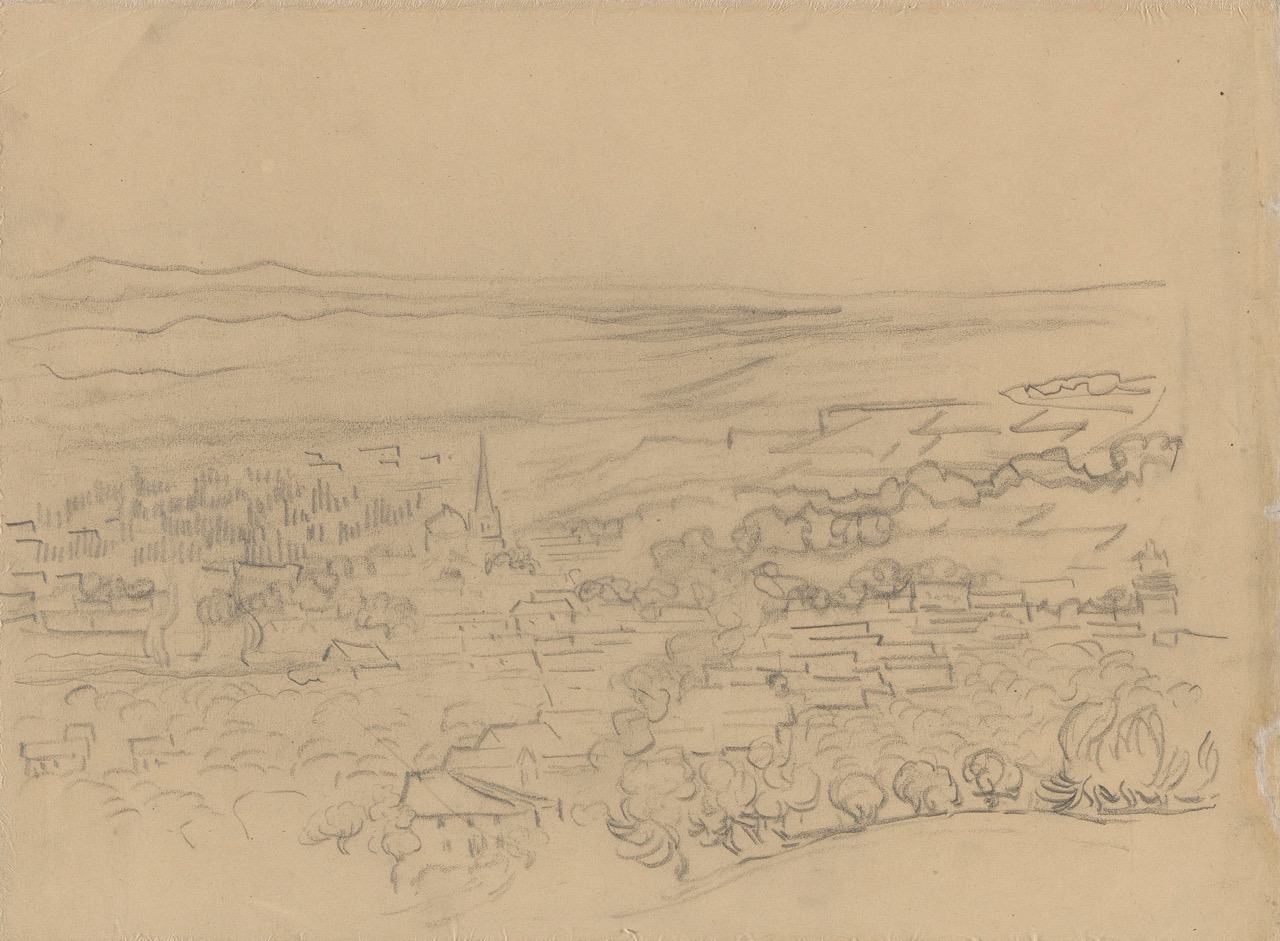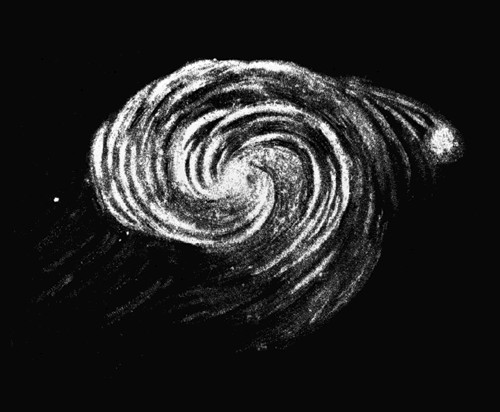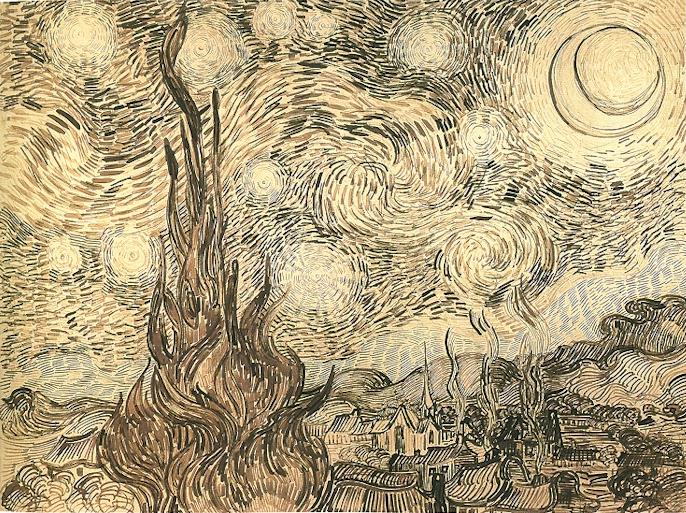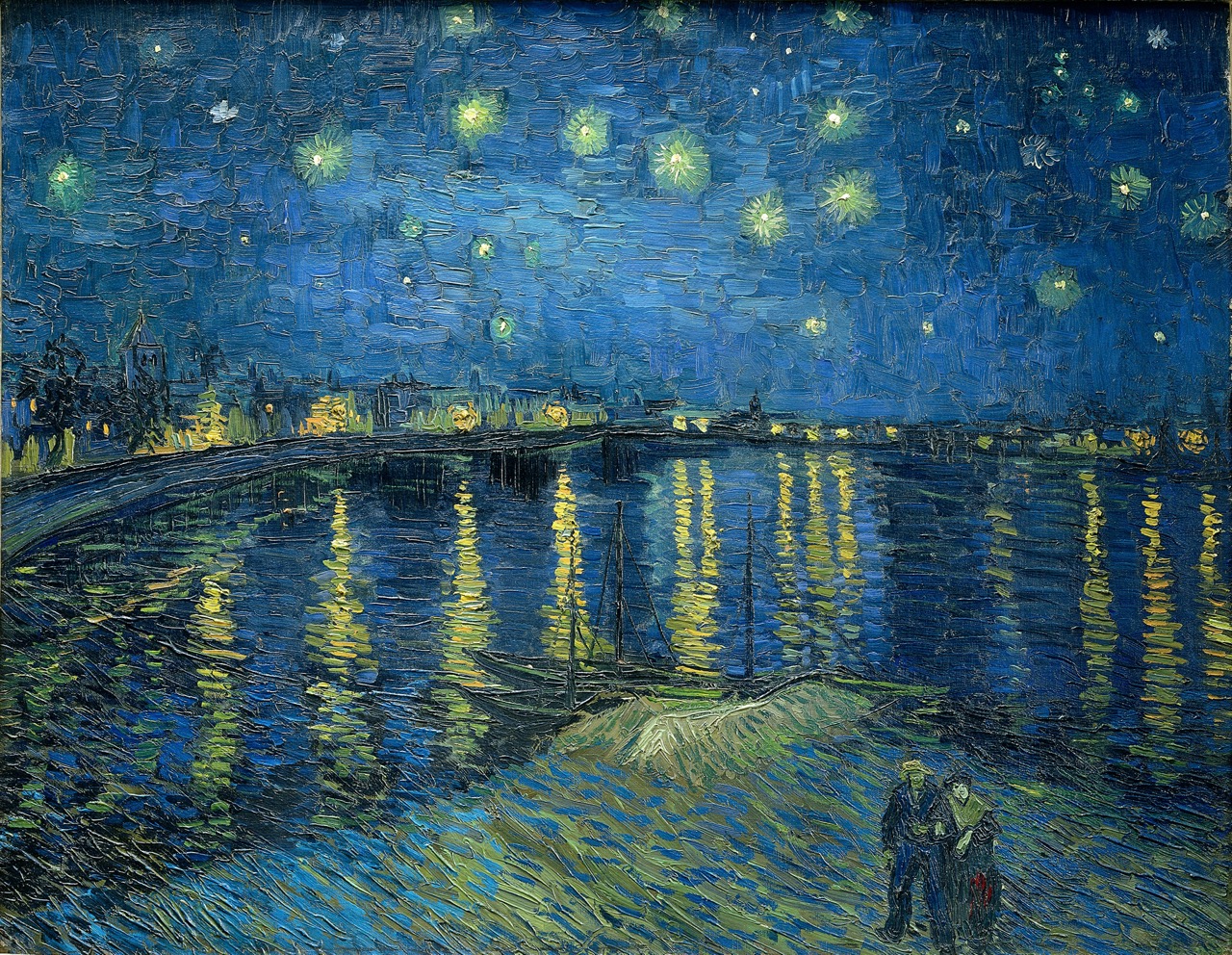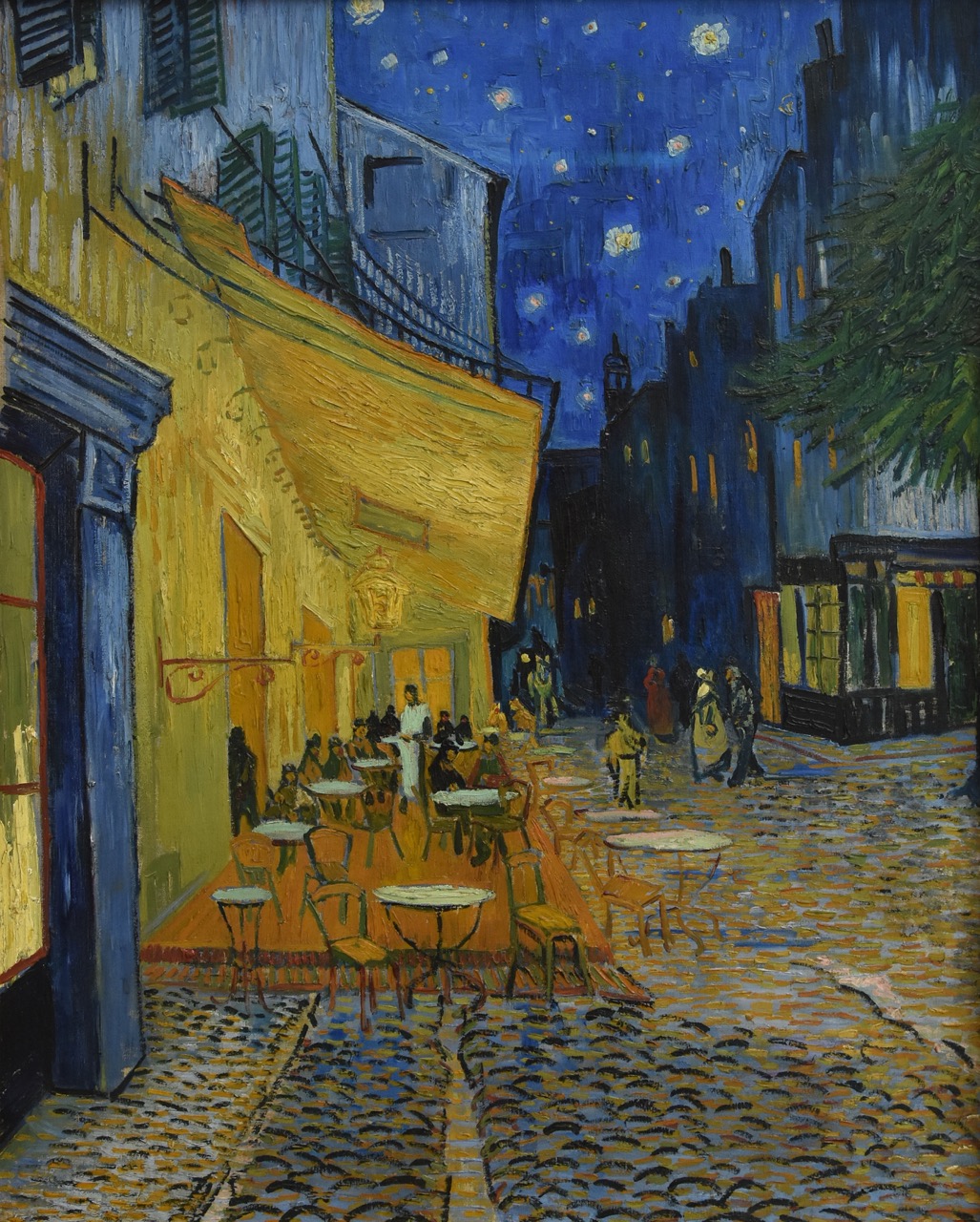About This Work
The Starry Night (Dutch: De sterrennacht) is an oil-on-canvas painting by the Dutch Post-Impressionist painter Vincent van Gogh.
Painted in June 1889, it depicts the view from the east-facing window of his asylum room at Saint-Rémy-de-Provence,
just before sunrise, with the addition of an imaginary village. It has been in the permanent collection of the Museum of Modern Art
in New York City since 1941, acquired through the Lillie P. Bliss Bequest.
Widely regarded as Van Gogh's magnum opus, The Starry Night is one of the most recognizable paintings in Western art.
Venus, As Seen In September Of 1889
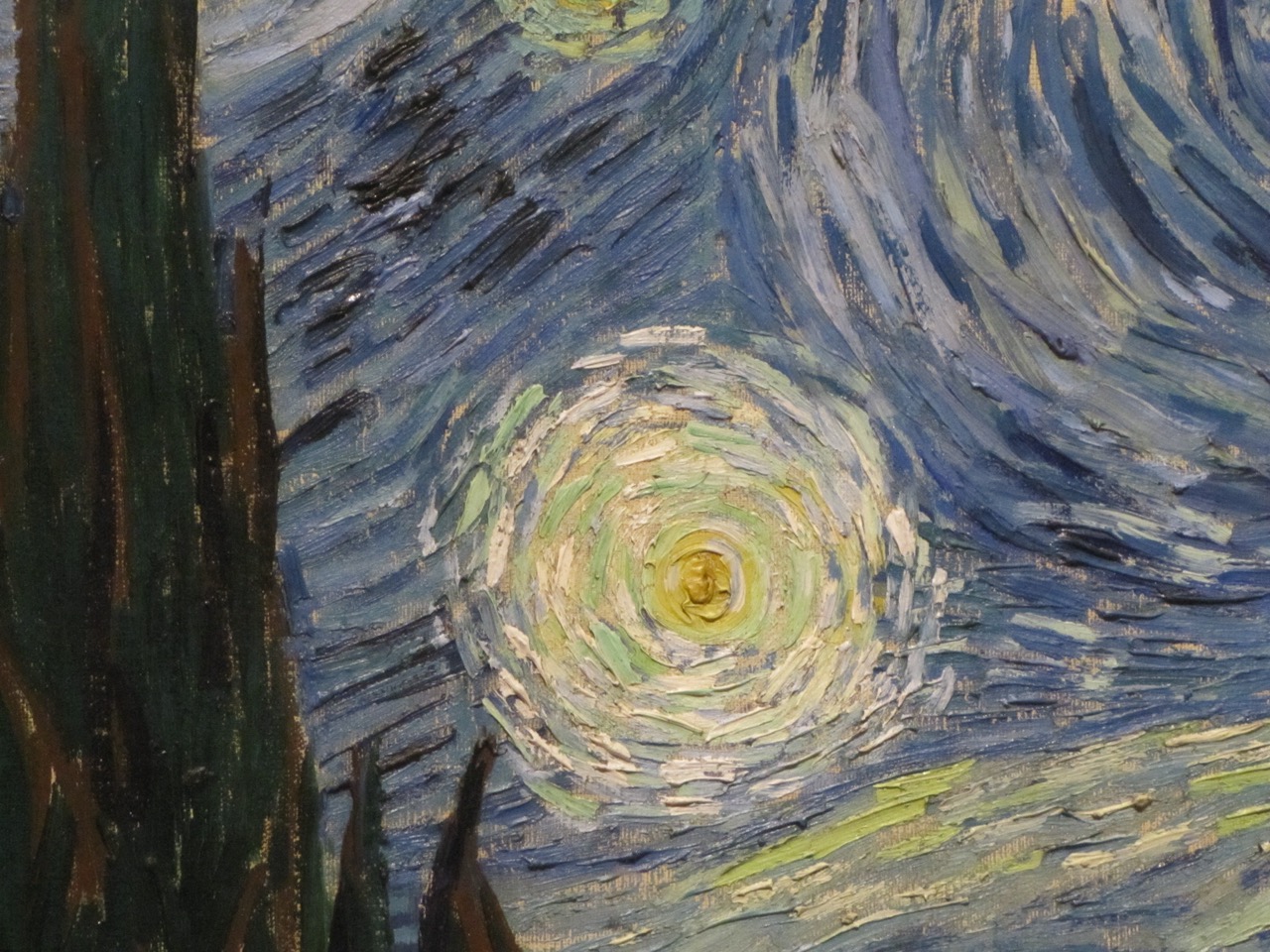
Planet Venus, located to the middle left of the painting.
In early June 1889, Vincent wrote to his brother Theo, "This morning I saw the countryside from my window a long time before sunrise
with nothing but the morning star, which looked very big". Researchers have determined that Venus (sometimes referred to as the "morning star")
was indeed visible at dawn in Provence in the spring of 1889, and was at that time nearly as bright as possible. So the brightest "star"
in the painting, just to the viewer's right of the cypress tree, is actually Venus.
Verticality In The Starry Night
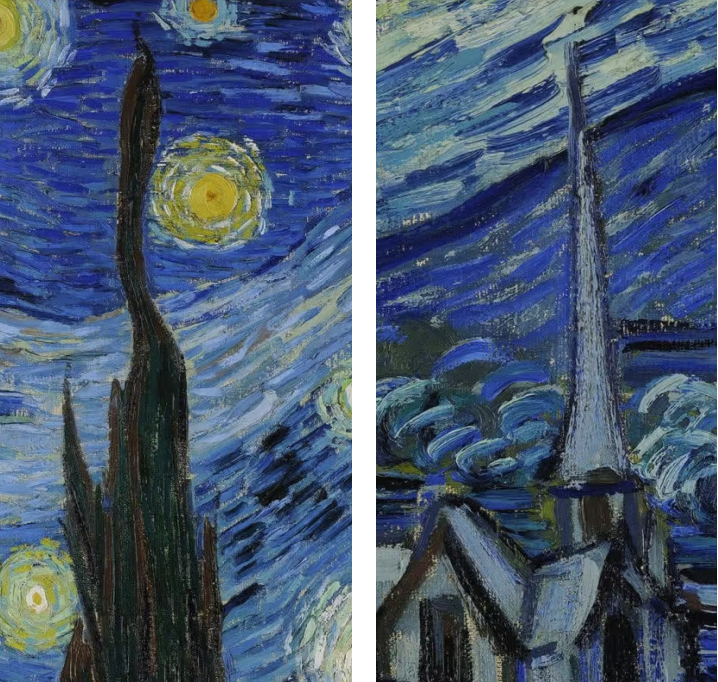
The cypress and the steeple of the church in the distance, occupying the vertical space.
Perspective is further highlighted by the looming verticality of the Cypress tree in the foreground. We see this verticality echoed in the steeple
of the church in the near distance, which gives the impression of depth. This perspective plays directly with the spatial aspects of the composition,
and the large expanse of the sky makes the village appear smaller and almost not as significant as the sky above, which seemingly takes precedence.
About The Artist
Vincent Willem van Gogh (30 March 1853 – 29 July 1890) was a Dutch Post-Impressionist painter who is among the most famous and
influential figures in the history of Western art. In just over a decade he created approximately 2100 artworks, including around 860 oil paintings, most of them
in the last two years of his life. They include landscapes, still lifes, portraits and self-portraits, and are characterised by bold, symbolic colours, and dramatic,
impulsive and highly expressive brushwork that contributed to the foundations of modern art. Only one of his paintings was known by name to have been sold during his lifetime.
Van Gogh became famous after his suicide, aged 37, which followed years of poverty and mental illness.
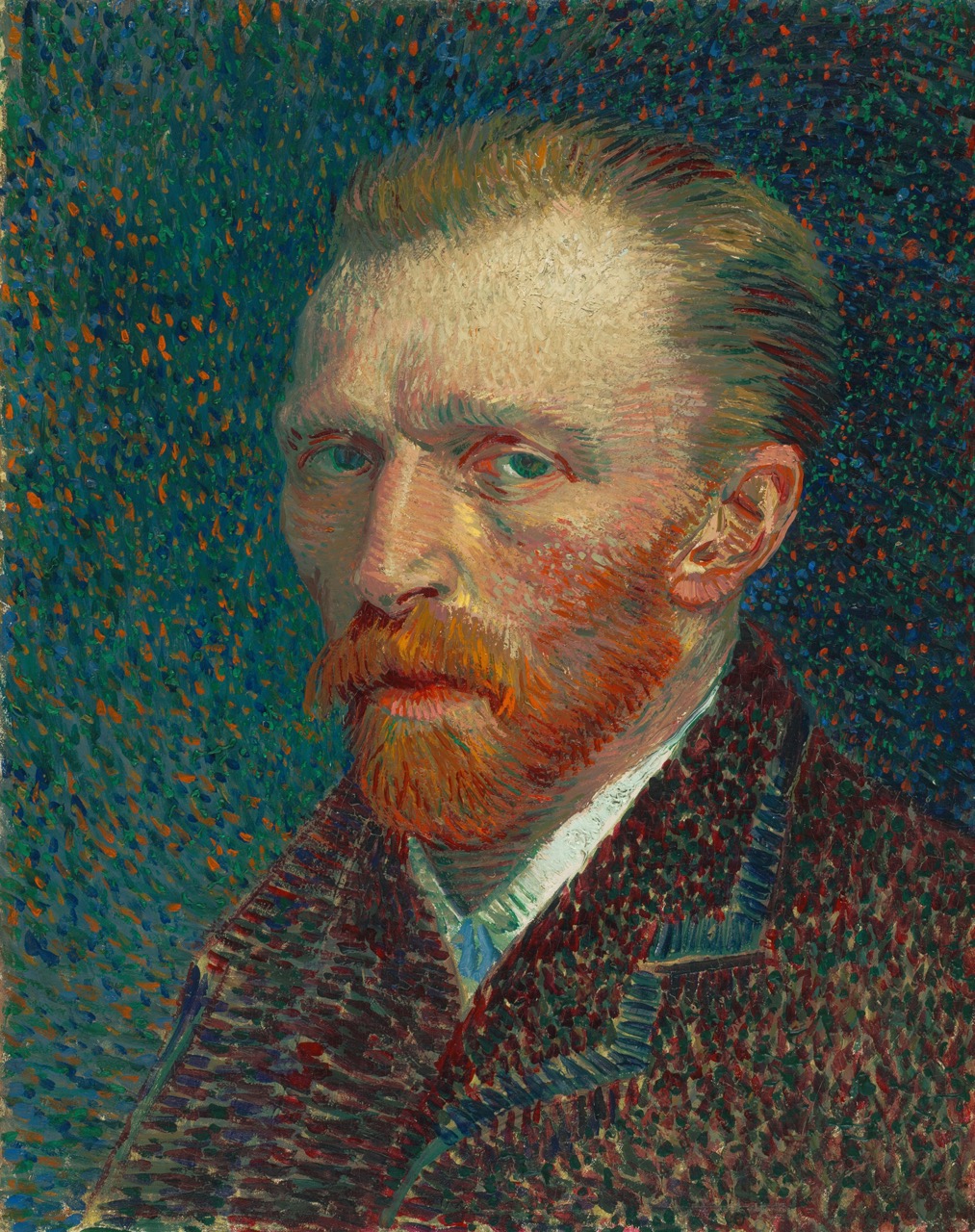
Self-Portrait by Vincent van Gogh, 1887, Art Institute of Chicago.
Born into an upper-middle-class family, Van Gogh drew as a child and was serious, quiet and thoughtful, but showed signs of mental instability. As a young man he worked as an art dealer,
often travelling, but became depressed after he was transferred to London. He turned to religion, and spent time as a missionary in southern Belgium. Later he drifted in ill-health and solitude.
He was keenly aware of modernist trends in art and, while back with his parents, took up painting in 1881. His younger brother, Theo, supported him financially,
and the two of them kept up a long correspondence by letter.
Van Gogh suffered from psychotic episodes and delusions. Though he worried about his mental stability, he often neglected his physical health, did not eat properly and drank heavily.
His friendship with Gauguin ended after a confrontation with a razor when, in a rage, he severed part of his own left ear. He spent time in psychiatric hospitals, including a period at Saint-Rémy.
After he discharged himself and moved to the Auberge Ravoux in Auvers-sur-Oise near Paris, he came under the care of the homeopathic doctor Paul Gachet. His depression persisted, and on 27 July 1890,
Van Gogh is believed to have shot himself in the chest with a revolver, dying from his injuries two days later.
Historical Context
Circumstances During Creation
When van Gogh painted The Starry Night in 1889, he was staying in the Saint-Paul-de-Mausole mental asylum in Saint-Rémy-de-Provence in the southern parts of France.
The preceding events leading up to his admission to the hospital were quite tumultuous and involved a confrontation with his acquaintance and fellow Post-Impressionist painter
Paul Gauguin, and van Gogh cutting off a part of his own ear in September 1888. He reportedly experienced a severe psychotic break after these events and admitted himself
to the Saint-Paul-de-Mausole asylum, where he would create many of his most significant works.
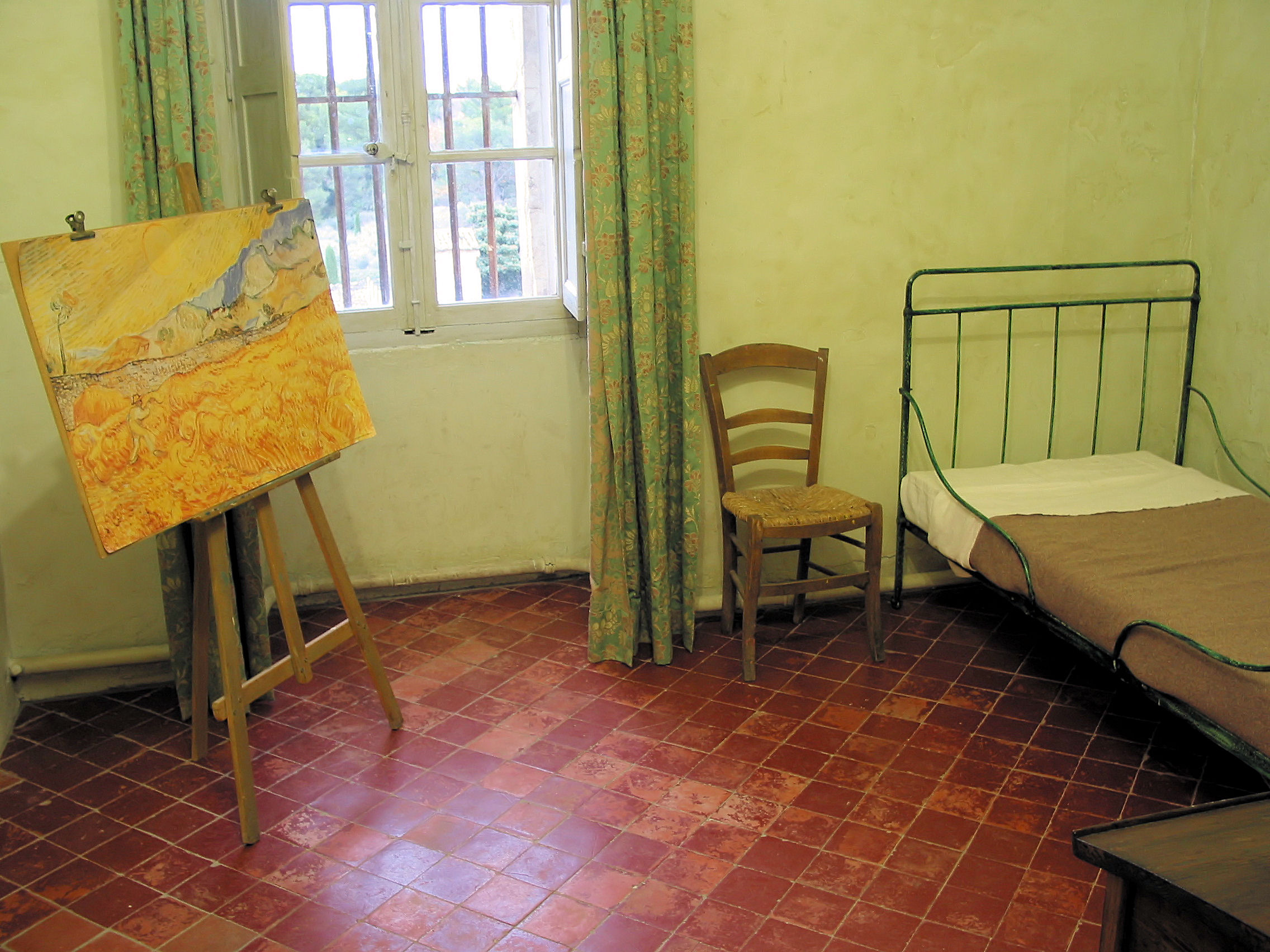
Van Gogh's bedroom at the Saint-Paul-de-Mausole asylum.
Although The Starry Night was painted during the day in Van Gogh's ground-floor studio, it would be inaccurate to state that the picture was painted from memory.
The view has been identified as the one from his bedroom window, facing east, a view which Van Gogh painted many variations of, including The Starry Night.
While the hospital staff did not allow Van Gogh to paint in his bedroom, he was able there to make sketches in ink or charcoal on paper; eventually, he would base newer variations
on previous versions. The pictorial element uniting all of these paintings is the diagonal line coming in from the right depicting the low rolling hills of the Alpilles mountains.
Post-Impressionism
During the 1880s, several artists moved away from the realists' approach of painting from nature and the world as they saw it. This approach is referred to as en plein air,
which means “outdoors” in French. The Impressionists focused on portraying the real aspects of life and not so much the depiction of the more traditional and classic subject
matter we see from Renaissance paintings.
Colors and brushwork were more expressive and artists were not focused on the type of stylistic elements like symmetry, order, and form. It is often described as an optical
form of art because artists focused on how they perceived the natural world and painted it accordingly. One of the leading figures during this new and revolutionary modern
period of art was Claude Monet.
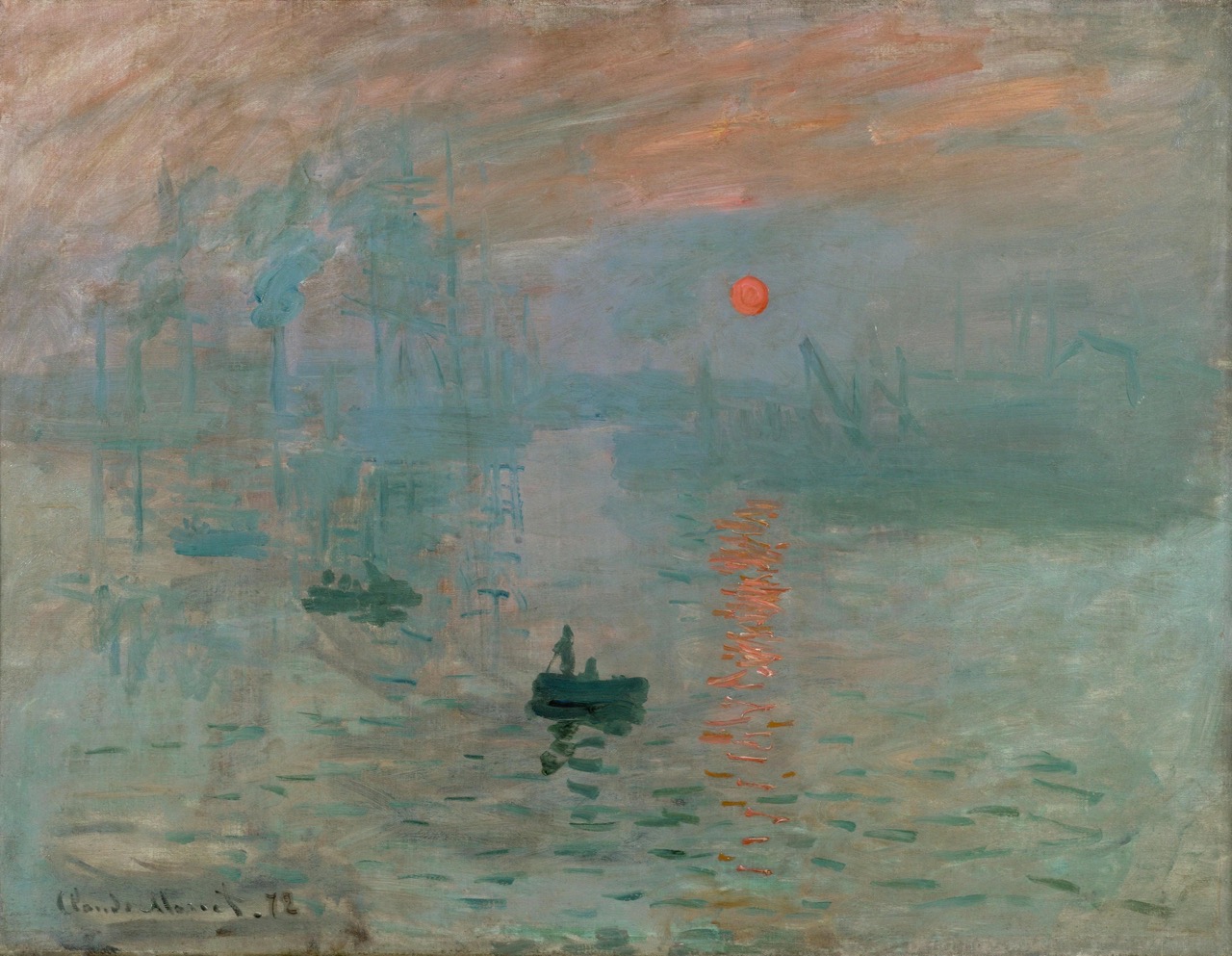
“Impression, Sunrise” by Claude Monet, painted 1872.
There was no one set of rules for Post-Impressionists, which followed directly after, as they all approached their art in different ways and styles.
However, a common thread was that artworks were generally more abstract and symbolic, not as focused on trying to depict the natural environment as the Impressionists were.
Artists like Paul Gauguin and van Gogh depicted their subject matter rooted in more emotional perspectives and symbolism.



